Introduction: The Enchantment of Lamb Tripe
In the vast tapestry of culinary traditions worldwide, few dishes evoke as much intrigue and passion as stir-fried lamb tripe. This humble yet deeply flavorful ingredient, often overlooked by many but cherished by food enthusiasts, holds a unique place in the hearts and stomachs of those who appreciate the art of transforming simple, unassuming foods into extraordinary meals. Lamb tripe, the stomach lining of a sheep, might seem an unlikely candidate for culinary excellence, but with the right techniques and ingredients, it can transform into a dish that is both comforting and exhilarating, a testament to the magic of cooking.
This article embarks on a culinary journey, exploring the intricacies of how to stir-fry lamb tripe to perfection. From selecting the freshest tripe to mastering the cooking process, every step is crucial in achieving a dish that balances texture, flavor, and aroma. We will delve into the preparation methods, essential spices and seasonings, cooking techniques, and even some creative variations to keep your lamb tripe stir-fry exciting and delightful.
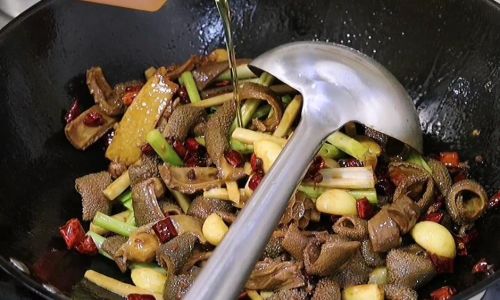
Section 1: Selecting and Preparing the Lamb Tripe
Choosing the Right Tripe
The first step in creating a delicious stir-fried lamb tripe dish is selecting high-quality tripe. Freshness is paramount; look for tripe that is firm, has a clean smell, and lacks any discoloration or sliminess. Ideally, source it from a reputable butcher or supplier who can guarantee its freshness and origin.
Cleaning and Blanching
Cleaning lamb tripe requires patience and attention to detail. Begin by rinsing the tripe thoroughly under cold running water to remove any surface impurities. Next, soak it in a mixture of cold water and vinegar or lemon juice for about 30 minutes to help neutralize any lingering odors. After soaking, rinse the tripe again thoroughly and pat it dry with paper towels.
Blanching is a crucial step that helps further cleanse the tripe and tightens its texture. Bring a large pot of water to a rolling boil, add a pinch of salt, and then carefully submerge the tripe pieces. Blanch for about 5-7 minutes, or until the tripe turns slightly opaque and firms up. Remove the tripe with a slotted spoon and plunge it into ice water to stop the cooking process. This step not only ensures hygiene but also prepares the tripe for slicing and stir-frying.
Slicing the Tripe
Once cooled, drain the tripe and place it on a clean cutting board. Using a sharp knife, slice the tripe into thin strips or bite-sized pieces. The thinner the slices, the quicker they will cook and the more tender they will become. Aim for uniformity in size to ensure even cooking.
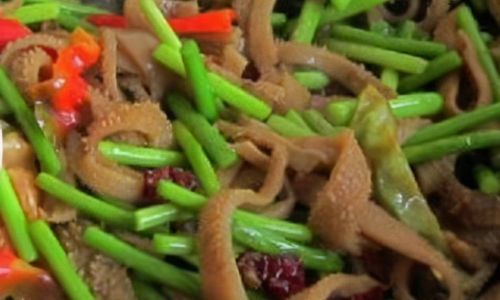
Section 2: The Art of Marinating
Marinating lamb tripe is a vital step that infuses it with flavor and tenderizes the meat. A good marinade should balance acidity, sweetness, saltiness, and aromatic spices. Here’s a classic marinade recipe:
- Ingredients:
- 2 tablespoons soy sauce
- 1 tablespoon rice vinegar or lemon juice
- 1 tablespoon Shaoxing wine or dry sherry (optional for added depth)
- 1 teaspoon sesame oil
- 1 teaspoon honey or sugar
- 1 teaspoon cornstarch (to help the marinade adhere to the tripe)
- 1 clove garlic, minced
- 1/2 teaspoon grated fresh ginger
- A pinch of white pepper
- Optional: a few drops of toasted sesame oil for extra aroma
Marinating Process
In a large bowl, whisk together all the marinade ingredients until well combined. Add the sliced tripe, ensuring all pieces are evenly coated. Cover the bowl with plastic wrap or transfer to a resealable plastic bag and marinate in the refrigerator for at least 30 minutes, preferably 1-2 hours for maximum flavor penetration.
Section 3: Stir-Frying Techniques and Ingredients
Heating the Pan and Oil
For stir-frying, a hot wok or large skillet is essential. Preheat your cooking vessel over high heat until it’s almost smoking. Add a generous amount of cooking oil—vegetable, peanut, or grapeseed oil work well—and let it heat up until shimmering. A hot pan and hot oil ensure that the tripe sears quickly, locking in juices and developing a delicious caramelized exterior.
Stir-Frying the Aromatics
Before adding the tripe, stir-fry the aromatics to build a flavor foundation. Add minced garlic, ginger, and chopped scallions (white parts only) to the hot oil. Stir-fry for about 10-15 seconds until fragrant but not burnt. This quick cooking releases their essential oils and flavors, creating a fragrant base for the dish.
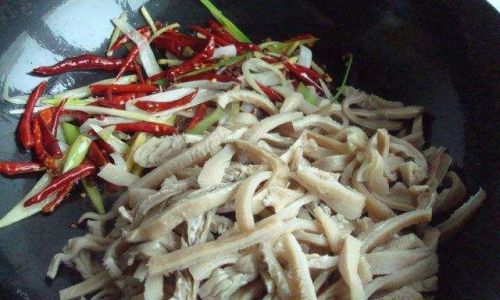
Cooking the Tripe
Remove the marinated tripe from the refrigerator and let it sit at room temperature for a few minutes to take the chill off. Drain off any excess marinade, as too much liquid can steam the tripe rather than sear it. Add the tripe to the wok in a single layer, spreading it out evenly. Stir-fry for about 2-3 minutes, tossing frequently to ensure even cooking. The tripe should turn a nice golden brown and develop a slightly crispy exterior.
Adding Vegetables and Sauce
Once the tripe is nearly cooked, add your choice of vegetables. Bell peppers, snap peas, carrots, and broccoli florets are all excellent choices that add color, texture, and additional nutrients. Stir-fry the vegetables for about 2-3 minutes until they are tender-crisp.
Next, pour in any remaining marinade or a prepared stir-fry sauce. A simple sauce can be made by combining soy sauce, oyster sauce, a splash of rice vinegar, a pinch of sugar, and a cornstarch slurry to thicken. Stir the sauce into the wok, ensuring it coats all the ingredients evenly. Cook for an additional minute until the sauce has thickened slightly and everything is heated through.
Finishing Touches
Before serving, add the green parts of the scallions and a drizzle of toasted sesame oil for a burst of freshness and aroma. Toss everything together gently and remove from heat. Optionally, garnish with chopped cilantro, sliced green onions, or a sprinkle of sesame seeds for added color and flavor.

Section 4: Creative Variations and Serving Suggestions
Spicy Lamb Tripe Stir-Fry
For those who enjoy a bit of heat, incorporate chili peppers, Sichuan peppercorns, or a splash of chili oil into the marinade and stir-fry. The combination of spicy, numbing, and savory flavors creates a dish that is both exhilarating and addictive.
Garlic and Black Pepper Version
Increase the amount of garlic and add freshly ground black pepper to the marinade and stir-fry. This variation highlights the natural flavors of the lamb tripe, creating a dish that is simple yet deeply satisfying.
Stir-Fry with Noodles or Rice
Serve your lamb tripe stir-fry over a bed of steamed jasmine rice, fried rice, or noodles to create a hearty, satisfying meal. The rich, savory flavors of the tripe and vegetables pair beautifully with carbohydrates, making for a comforting and filling dish.
Appetizer or Main Course
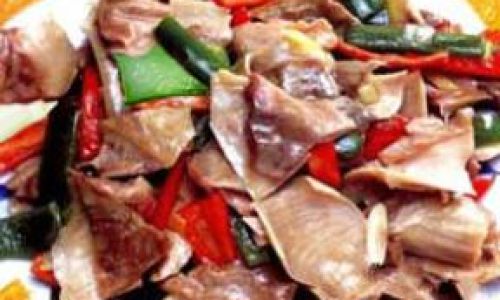
Lamb tripe stir-fry can be enjoyed as an appetizer, served in smaller portions with toothpicks for easy eating, or as a main course accompanied by a side of steamed vegetables or a light salad.
Conclusion: A Culinary Adventure in Flavor and Texture
Stir-frying lamb tripe is not just about cooking an ingredient; it’s about embarking on a culinary journey that explores the depths of flavor, texture, and aroma. By meticulously selecting, preparing, marinating, and stir-frying the tripe, you can transform this often-overlooked ingredient into a dish that is both a delight for the senses and a testament to your culinary prowess. Whether you enjoy it spicy, garlicky, or simply savory, lamb tripe stir-fry offers endless possibilities for creativity and enjoyment. So, the next time you’re at the market, consider giving lamb tripe a chance—you might just discover a new culinary love affair.



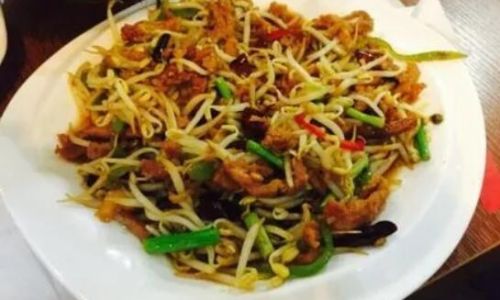

0 comments